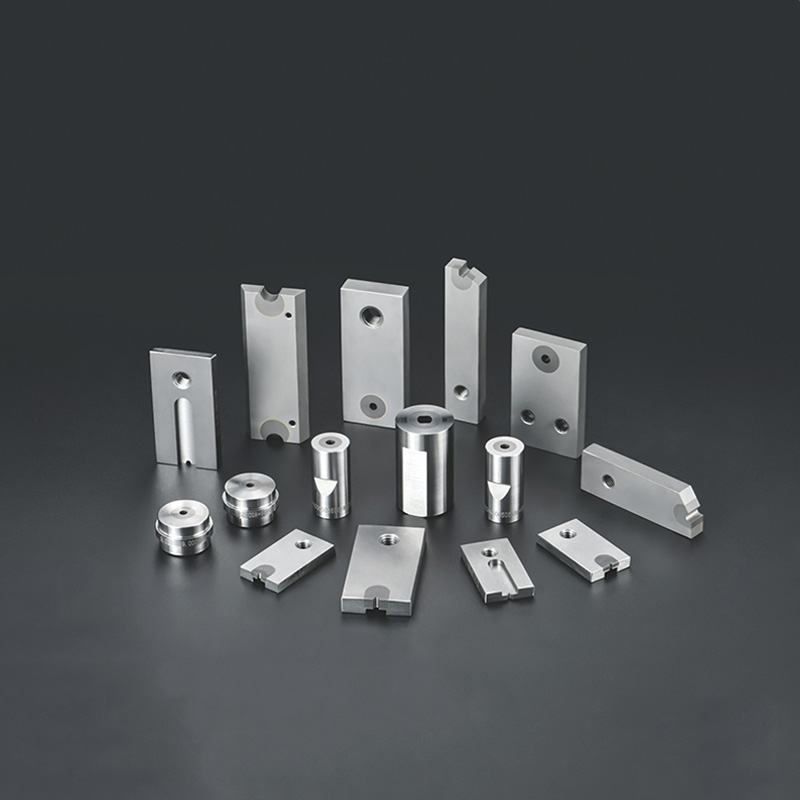Bolt Dies are critical tools in the production and repair of threaded fasteners. Designed for high-precision threading under significant mechanical stress, these dies must withstand intense workloads and challenging environments. However, like any precision tool, Bolt Dies can experience wear, damage, or failure over time. Understanding the common failures and their causes is essential for extending the lifespan of your tooling and ensuring high-quality thread production.

1. Chipping and Edge Breakage
Problem:
The die’s cutting edge chips or fractures, leading to poor thread quality, tool failure, or even part rejection.
Causes:
Excessive cutting force due to improper feed rate or speed
Inadequate lubrication or use of incorrect coolant
Using the die on materials harder than it is designed for
Incorrect alignment during threading
Prevention Tips:
Always match the die material (e.g., HSS, carbide) with the workpiece material
Use proper cutting lubricants to minimize friction and heat
Maintain optimal threading speeds and feeds
Ensure proper die holder alignment and avoid side loading
2. Excessive Wear and Dulling
Problem:
The cutting edges of the bolt die become blunt over time, leading to inconsistent thread dimensions and increased torque requirement.
Causes:
Continuous high-volume production without scheduled maintenance
Use on abrasive or hardened materials
Poor or no lubrication during cutting
Skipping regular cleaning or sharpening
Prevention Tips:
Implement routine inspection and sharpening schedules
Choose dies with wear-resistant coatings or high-hardness materials (e.g., TiN-coated HSS or carbide)
Use proper lubrication, especially with stainless steel and alloy steels
Replace dies before wear affects thread precision
3. Thread Deformation and Poor Thread Quality
Problem:
Threaded parts exhibit deformed, incomplete, or inconsistent threads, affecting fit and performance.
Causes:
Using a worn-out or damaged die
Inaccurate die settings or incorrect thread pitch
Workpiece instability or poor clamping during threading
Insufficient chip evacuation
Prevention Tips:
Regularly calibrate and check die settings
Use chip breakers or spiral dies for better chip flow
Secure workpieces firmly to avoid misalignment
Inspect threads with gauges or thread measuring tools
4. Die Cracking or Fracture
Problem:
Cracks develop in the die body or cutting edges, sometimes resulting in complete breakage.
Causes:
Thermal shock during sudden cooling/heating
Improper heat treatment of the die material
Excessive torque beyond design limits
Impacts from dropped tools or improper handling
Prevention Tips:
Choose dies with proper heat treatment and material hardness
Avoid sudden temperature changes during operation
Operate within the manufacturer’s recommended torque values
Store and handle dies carefully to prevent accidental damage
5. Corrosion and Rusting
Problem:
Especially common in carbon Steel Dies, corrosion affects surface finish and threading accuracy.
Causes:
Storage in humid environments
Lack of protective coating or oil film
Exposure to corrosive materials or cutting fluids
Prevention Tips:
Store dies in a dry, temperature-controlled area
Apply anti-corrosion oil or protective coating after cleaning
Choose rust-resistant materials like stainless HSS or coated dies
Best Practices for Preventing Bolt Die Failures
To minimize downtime and reduce tool replacement costs, consider adopting the following maintenance best practices:
Routine Inspection: Check for edge wear, cracking, and thread damage after each batch.
Proper Lubrication: Always use suitable cutting fluids based on material type and application.
Thorough Cleaning: Remove chips, coolant, and debris immediately after use to prevent buildup.
Correct Storage: Store dies in organized, dry compartments with desiccants or rust inhibitors.
Monitor Output Quality: Regularly inspect thread quality to detect early signs of tool degradation.
Final Thoughts
Bolt Dies are precision tools that require care, attention, and preventive maintenance to perform optimally. By understanding the common failure modes and implementing best practices, manufacturers and repair professionals can maximize tool life, reduce costs, and maintain high-quality thread production across industries—from automotive to construction and aerospace.
Need high-performance bolt dies built to last?
We offer a wide range of bolt dies made from premium materials with advanced coatings to resist wear, heat, and corrosion. Contact us to explore custom solutions for your threading applications.











